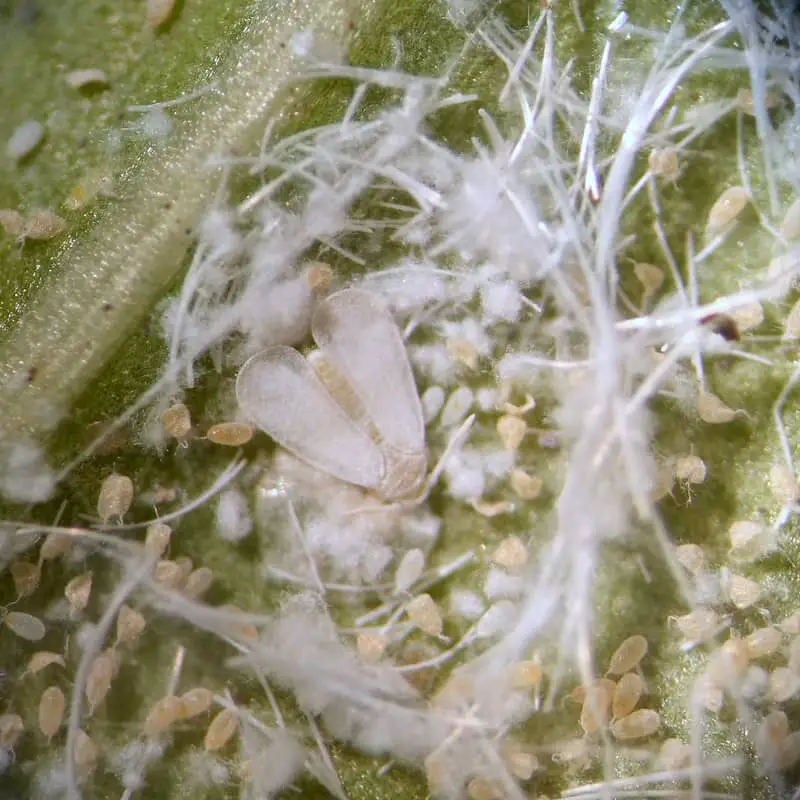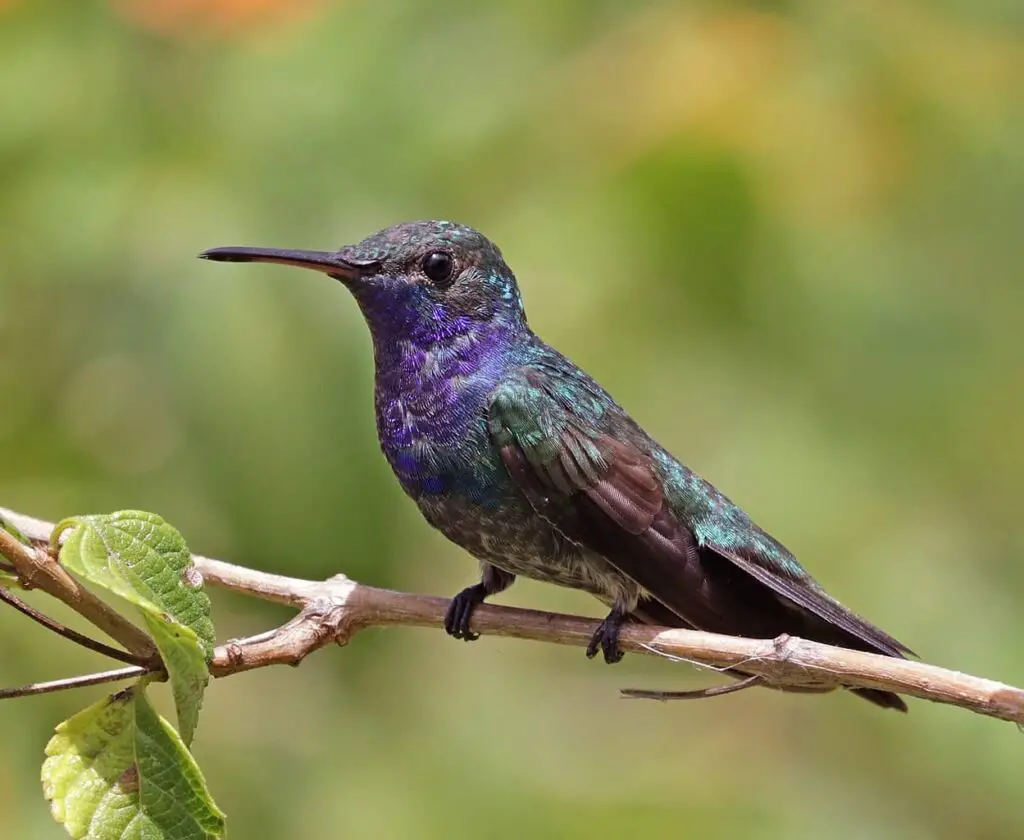All About Whiteflies
Whiteflies are Hemipterans belonging to the Aleyrodidae family. It is also the only member family of superfamily Aleyrodoidea. In fact, Entomologists have described more than 1550 whitefly species. Most of them are specific to plant types. However, some species can infest a wide range of plants.
This article focuses on whiteflies, their characteristics, infection and prevention.
Some of the well-known whitefly species include citrus, greenhouse, Silverleaf, giant and bandedwinged. Among them, Citrus, greenhouse, and Silverleaf species are most commonly found in the united states.
Despite the name, citrus species are not limited to citrus plants. In fact, these hardy species can infect almost any plant, especially in the south. Similarly, greenhouse whiteflies also infest many types of plants. But they are comparatively easy to control.
Silverleaf species are comparatively smaller than others. They are slightly yellow in color and are common in the southern US. Other species of whiteflies also exist in the US.
Table of Contents
Characteristics

Photo by Amada44 (Wikimedia Commons) (CC BY-SA 4.0)
Whiteflies have small wings and soft bodies. Visually, they appear more like moths than flies. Closely related to mealybugs and aphids, whiteflies have a powdery wax coating on their bodies. Though they can fly, these pests are not flies.
The bodies of these small insects’ measure about 1 – 2 mm long and have a wingspan of about 3 mm. Typically, they feed gathering in clusters underside of the leaves. They are most active during the daytime. When disturbed, they scatter flying in all directions.
In fact, these insects thrive all-round the year across the globe, especially in the south. In the north, they go dormant during winters. Though tough and persistent, these insects can be treated with chemicals.
Typically, the whiteflies infect the plants in warm and humid conditions during summer.
In warmer Zones (USDA 8 or higher), these insects reproduce almost all around the year. They also can overwinter effectively. Therefore, both indoor and outdoor plants are susceptible to infection.
In cooler zones (USDA 7 or lower), these flies cannot survive cool winters. Hence, their infection is limited to greenhouse environments or indoor plants in winter. Outdoor plants are safer comparatively.
However, if you have purchased infested outdoor plants, the seasonal infections can trouble the plant every year. So, make sure to check the plants before purchasing.
Life Cycle
From eggs, the whiteflies develop through several instars (development stages). The pupa stage is the final instar. During this stage, the young ones transform into adults.
Upon emerging, the female adults start laying up to 400 eggs within a week. The eggs are too small and almost invisible. Typically, these pests lay eggs in well-protected, hard-to-detect locations of the plants. Typically, these eggs hatch any time within a week to a month.
Emerging from the eggs, young pests start feeding on the plants immediately. Usually, these young pests are small and circular in shape. Their appearance is hard to detect in the plants.
Depending on the environment, the period of the growth cycle of these young pests can vary from a month to even a year. In any case, these pests continue to feed on and damage the host plant.
Whiteflies Infection

Whiteflies have piercing mouthparts. Usually, they pierce the foliage and suck the sap out of the plants. This leads to various problems in hosted plants as listed below
Foliage
Typically, the infected foliage will decolorize and wilt. Having stunted growth, the foliage may decay and also promote bacterial or fungal formations. Finally, the leaves shrivel and fall off.
Plants
Usually, the whiteflies are insatiably hungry for sap. Hence, they suck as much sap liquid as possible from plants. Due to this, most young plants become weak, shrivel and die.
The adult plants also weaken due to the loss of vital sap liquids. Hence, they may not photosynthesize actively. This further weakens the plants. As a result, the plants become vulnerable to lethal diseases and heat stress.
Honey Dew
These pests excrete a sugary liquid known as Honeydew. With time, this liquid causes fungal infections like black molds (Black Sooty). These molds disturb the food processing ability of the plants in the infected parts.
In addition, the honeydew attracts secondary insects like ants, beetles, or wasps to feed on it. Typically, these secondary insects establish themselves on the plants, further damaging them.
Spoiling Looks
Typically, the active whiteflies buzz around the infested planted all day long. In scenic gardens or nearby houses, this causes unpleasant looks.
Other Problems
When you harvest fruits or flowers from infected plants, these annoying insects may enter homes with the yield. In the gardens, these prolific insects readily spread to nearby healthy plants from the infected ones.
How to Control Whiteflies
As with other pests, there are various methods available to control the whiteflies. Always check the plants for pests.
When you approach the infected plants, the bugs tend to fly around. Especially in such scenarios, check the underside of the leaves and other hidden parts. If you suspect the infection, start the treatment as early as possible.
Blasting Water
With a pressurized water hose, blast off the pests from infected plants. As a result, the pests like whiteflies, aphids, etc. scatter off from plants. This also dislodges the eggs and nymphs to some extent.
Insecticidal Soaps
Following the instructions in the commercial package, spray the insecticidal soap solutions on the plants. Make sure to apply the solution to the leaf bottoms and also other hidden parts of the plant. You may have to repeat the application several times a day.
To prevent the adverse reactions due to heat, spray the solution when the atmosphere is cool (early mornings or late evenings). This also prevents the killing of beneficial insects or pollinators.
In a similar manner, you can also try homemade Insecticidal soaps as recommended by National Gardening Association.
Prepare the solution using liquid soap (with no harmful chemicals) like pure castile and water. Mix about 4 – 5 tablespoons of soap to a gallon of soft or bottled water. Then, spray the solution as immediately as possible with a sanitized sprayer.
Vacuum Cleaners
Organically, you can also try using vacuum cleaners to remove these pests. For effectiveness, you may have to repeat the process once every few days. But, make sure to empty the vacuum cleaner somewhere away from home.
How to Prevent Whiteflies Infection

Photo by Charles J. Sharp (Wikimedia Commons) (CC BY-SA 4.0)
Inspecting New Plants
Before purchasing new plants, inspect them for pests and diseases. If needed, get help from experts. Even after purchasing, keep the new plants away from other plants in the garden for a few days. In this way, you can easily curtail new infections, if they appear.
Natural Predators
By introducing natural predators, you can control most pests including whiteflies. Some of the common natural predators include spiders, Ladybugs, dragonflies, green lacewing larvae, and damselflies.
By creating habitats, you can also attract pest-feeding birds like humming birds. In addition to feeding on pests, these beautiful birds themselves are a treat to watch.
Avoiding Chemicals
As far as whiteflies are concerned, avoid using chemicals. Most of the time, these harmful chemicals end up killing beneficial insects rather than the resistant whiteflies.
Mulching
Generally, whiteflies prefer to infest plants like tomatoes, peppers, cabbages, and sweet potatoes. Hence, spread aluminum reflective mulches around these plants. This makes finding the host plants difficult for these pests.
Traps
In fact, you can use yellow cards to find the symptoms of infection. These cards appear to the whiteflies as new mass foliage. Hence, they sit on it, get trapped, and die. if a few flies are captured, then you have to start the controlling procedure immediately.
Top Posts
How to Grow Avocado Trees in Gardens
What is Root Rot Disease

